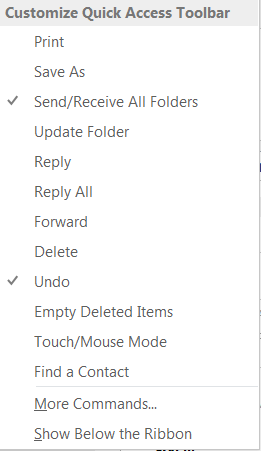We’ve heard of using Mail Merge for sending out letters. Have you ever had the need to use Mail Merge with emails?
The process for creating mail merges for outlook is almost the same as for letters. You start with a word document and an excel spreadsheet with contact information.
Preparing the recipients list
Create a spreadsheet containing at minimum, these three columns:
- First Name
- Last Name
- Email
Make sure the email column contains no special characters (other than the @ sign, the hyphen (-), the underscore (_) and the period (.) of course) and to make things easier for yourself, include a header show with these column labels, so you can find your fields more easily.
Prepare the email message
- Start Microsoft Word and begin a new blank document.
- Switch to the Mailings ribbon.
- Click on the Start Mail Merge menu and select the E-Mail Messages option.
- Click on the Select Recipients menu and select the Use Existing List option.
- Browse and select the Excel spreadsheet you created earlier, and then click on the Open button.
- In the Select Table window, click on the name of the sheet that contains your recipient’s information.
- If you have options for Sheet1, Sheet2, and Sheet3, the information is probably on Sheet1.
- If you entered column headings in the first row of your spreadsheet, make sure the First row of data contains column headers option is checked.
- Click on the OK button.
Compose the body of your message using Word
You can switch back to the Home ribbon to add formatting including bold, italics, font colors, and headings.
Not all formatting will visible to all recipients. Outlook users will see most of the formatting. Web mail users will see bold, italics, and lists but not font styles or colors.
To customize the contents of your message with information from your spreadsheet
- Position the cursor where you want to insert the data.
- Switch to the Mailings ribbon.
- Click on the Insert Merge Field menu and select the field containing the data you want to insert.
- Save the body of the email message the same way you would save any other Word document.
Send the email messages
- Switch to the Mailings ribbon.
- Click on the Finish & Merge menu and select the Send E-Mail Messages option.
- From the To drop-down menu, select the field containing the email address of each recipient.
- In the Subject text box, enter the subject line used for the email message.
- From the Mail format drop-down menu, select the HTML option.
- For the Send records radio button, select the All option.
- Click on the OK button to send the messages.
More Tips
If you customize the message for each recipient, use the Preview Results button on the Mailings ribbon to see the data from your spreadsheet in the body of the message instead of the field names. Use the arrows to right of this button on the ribbon to preview different records from your spreadsheet.
Customizing the email message for each recipient is easiest when the information is split into several columns. For example keeping the first name and last name in separate columns is better than keeping them in a single column called name. You can always put two fields together in your message, but pulling fields apart is much more difficult.
If you send newsletters or flyers as PDF attachments, consider publishing the PDF on your SharePoint site and then using email merge to send a notice with a link. Later you can check your site’s statistics to determine how many people downloaded the PDF.
This last tip goes for other types of documents as well. One great reason for sending a link to a cloud version of the site rather than an actual file is that if you discover an error in your file, you can fix it without needing to resend the document to everyone.
You may want to add yourself as the first recipient in your spreadsheet so you can test the message delivery. Use the Preview Results button to view the message you will receive. Follow the sending instructions, but change the Send Records option from All to Current. This will send only the message currently being previewed through Outlook.



























